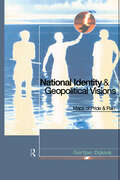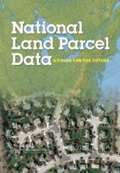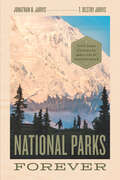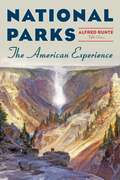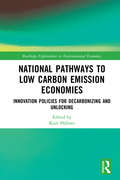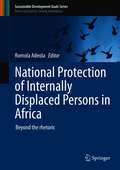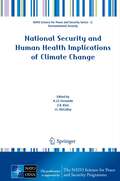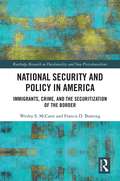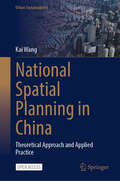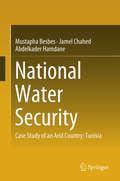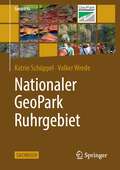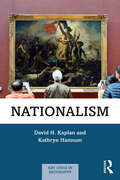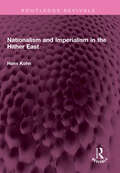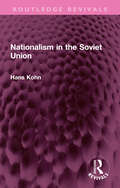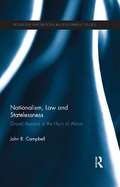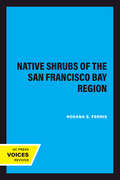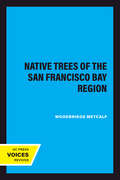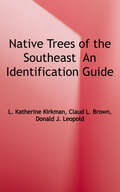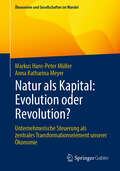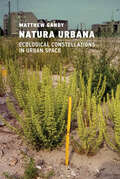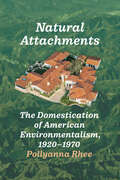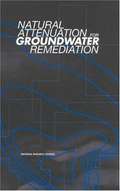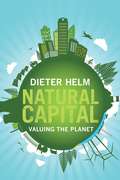- Table View
- List View
National Geographic World Cultures and Geography: Eastern Hemisphere
by National Geographic LearningThe World Cultures and Geography Copyright Update will maintain the high quality content and stunning visuals of the original program, but will include updated maps, charts, graphs, and data sources as well as new religious content developed with the help of accredited religious reviewers. It will also include general content updates to address current events, death dates, geographical name and border changes, and recent social and political changes.
National Geographic: World Cultures and Geography, Eastern Hemisphere
by National Geographic LearningThis book provides a detailed coverage of World culture with special features like National Geographic Explorers,Global Issues,Graphs,Charts and Tables and Infographics.
National Identity and Geopolitical Visions: Maps of Pride and Pain
by Gertjan DijinkFrom the Third Reich to Bosnia, nationalism - a sense of a nation's place in the world - has been responsible for much bloodshed. Nationalism may be manipulated by political leaders or governments but it springs from the people. Something in the history and environment of a national group creates it. This volume aims to locate and analyze the myth of national identity and its value in creating pride, deflecting fear or legitimating aggression. A range of essays - on Britain, the United States, Germany, Russia, Iraq, Serbia, Argentina, Australia, and India - illustrate the different manifestations of the geographical imagination across the countries of the world.
National Land Parcel Data: A Vision for the Future
by National Research Council of the National AcademiesLand parcel data (also known as cadastral data) provide geographically referenced information about the rights, interests, and ownership of land and are an important part of the financial, legal, and real estate systems of society. The data are used by governments to make decisions about land development, business activities, regulatory compliance, emergency response, and law enforcement. In 1980, a National Research Council book called for nationally integrated land parcel data, but despite major progress in the development of land parcel databases in many local jurisdictions, little progress has been made toward a national system. National Land Parcel Data looks at the current status of land parcel data in the United States. The book concludes that nationally integrated land parcel data is necessary, feasible, and affordable. It provides recommendations for establishing a practical framework for sustained intergovernmental coordination and funding required to overcome the remaining challenges and move forward.
National Parks Forever: Fifty Years of Fighting and a Case for Independence
by Jonathan B. Jarvis T. Destry JarvisTwo leaders of the National Park Service provide a front-row seat to the disastrous impact of partisan politics over the past fifty years.The US National Parks, what environmentalist and historian Wallace Stegner called America’s “best idea,” are under siege. Since 1972, partisan political appointees in the Department of the Interior have offered two conflicting views of the National Park Service (NPS): one vision emphasizes preservation and science-based decision-making, and another prioritizes economic benefits and privatization. These politically driven shifts represent a pernicious, existential threat to the very future of our parks.For the past fifty years, brothers Jonathan B. and T. Destry Jarvis have worked both within and outside NPS as leaders and advocates. National Parks Forever interweaves their two voices to show how our parks must be protected from those who would open them to economic exploitation, while still allowing generations to explore and learn in them. Their history also details how Congress and administration appointees have used budget and staffing cuts to sabotage NPS’s ability to manage the parks and even threatened their existence. Drawing on their experience, Jarvis and Jarvis make a bold and compelling proposal: that it is time for NPS to be removed from the Department of the Interior and made an independent agency, similar to the Smithsonian Institution, giving NPS leaders the ability to manage park resources and plan our parks’ protection, priorities, and future.“Painful history plus a roadmap for change equals a compelling book.” ―Revelator“This book is compelling reading for all conservation biologists to emulate positive aspects and avoid pitfalls when developing an effective and self-sustaining park system.” ―Community Ecology
National Parks: The American Experience
by Alfred RunteRevised with a new epilogue, &“We the People,&” this fifth edition of National Parks: TheAmerican Experience continues the highly engaging story of how Americans invented and expanded the concept of national parks. A prominent adviser to the Ken Burns Emmy Award-winning documentary, "The National Parks: America's Best Idea," Alfred Runte is renowned as the nation's leading historian on the meaning and management of these treasured lands. Further supported with period photographs and now twelve pages of color paintings, National Parks remains a stirring look into the lands that define America, from Yosemite and Yellowstone to wilderness Alaska. This is how we got our parks, and looking to the future, the challenges that remain in preserving them. Are &“we the people&” still up to the task? Yes, this history advises, but only if we consistently cherish the national unity that our commitment to the parks further demands.
National Pathways to Low Carbon Emission Economies: Innovation Policies for Decarbonizing and Unlocking (Routledge Explorations in Environmental Economics)
by Kurt HübnerThe science is clear: climate change is a fact and the probability is extremely high that it has been caused by humans. At the same time, policy responses are hesitant, rather lukewarm and differ substantially between nation-states. The question is, what drives and what blocks radical action? This book makes the case that institutional settings, path dependence and emerging change coalitions are critical in explaining climate policies across the global political economy. Technological and social-political innovations are key drivers for dealing with climate change. This class of innovation is very much guided, or suppressed, by a national economy's established institutional settings. By anchoring national case studies in a version of the well established ‘varieties of capitalism’ approach, the chapters of this book show why some economies are policy leaders and others become policy followers, or even policy interlockers. Moreover, the case studies demonstrate the extent to which external events and institutional constraints from the international polity influence national innovation strategies. Taking a unique analytical approach, which combines insights from innovation policies and a variety of capitalism literature, the authors provide genuine comprehension of the interplay between institutional settings, political actors and climate policies. National Pathways to Low Carbon Emission Economies offers a valuable examination of these issues on climate change that will be of interest to academics and postgraduates researching climate policy, economic policy and social movements. Furthermore, it is relevant for policy analysts and policy makers who are interested in learning from climate policies in the context of innovation strategies for a range of countries.
National Protection of Internally Displaced Persons in Africa: Beyond the rhetoric (Sustainable Development Goals Series)
by Romola AdeolaThis volume examines the protection of internally displaced persons (IDPs) through an interdisciplinary lens, with a focus on IDPs in Africa. The novelty of this book resonates from the fact that it explores national perspectives on internal displacement, with the aim of providing a well-grounded engagement on the subject of internal displacement, for which very little exists. The chapter authors are drawn from various disciplines and institutional backgrounds, and provide context-based analysis and examine the situation in countries with significant population displacement. The work is a timely engagement, as the issue of internal displacement has emerged as a pertinent concern in Africa. Each of the chapters in this book draw on significant context-based knowledge and on issues for which there is a need for pertinent attention across the African countries. This book will be a significant reference point for researchers, professors, practitioners, judges, policy makers, international organizations, regional bodies, lawyers and scholars in the field of migration, forced migration, and regional institutions.
National Security and Human Health Implications of Climate Change
by Harindra Joseph Fernando J. L. Mcculley Z. B. KlaićClimate change has been identified as one of the greatest threats to humanity of all times. In addition to producing adverse environmental conditions such as rising sea level, drought, crop failure, vector-borne diseases, extreme events, degradation of water/air quality and heat waves, climate change is also considered a threat multiplier that leads to local and international conflicts and armed interventions. Urban areas may bear the brunt of climate change, as they are the centers of human habitation, anthropogenic stressors and environmental degradation, and the ensuing health impacts are of grave societal concern. The papers in this volume span a suite of climate change repercussions, paying particular attention to national security and human health aspects. It is an outcome of a NATO Advanced Research Workshop held during April 28-30, 2011 in Dubrovnik, Croatia, sponsored by the NATO Science for Peace and Security Program. The contributions cut across the elements of modeling, natural, political and social sciences, engineering, politics, military intervention, urban planning, industrial activities, epidemiology and healthcare.
National Security and Policy in America: Immigrants, Crime, and the Securitization of the Border (Routledge Research on Decoloniality and New Postcolonialisms)
by Wesley S. McCann Francis D. BoatengThis book investigates the strategic use of America’s historical crime control, counterterrorism, national security and immigration policies as a mechanism in the modern-day Trump administration to restrict migration and refugee settlement with a view of promoting national security and preservation. National Security and Policy in America critically explores how American culture, neocolonial aspirations, and indifference towards others negatively impact long-term global security. This book examines immigration and security policies and their origins, purpose, impact, and evolution vis-à-vis the recently imposed ‘travel ban’ and proposed border wall across the Southern border, as well as how foreign policy influenced many of the migration flows that are often labeled as security risks. The book also seeks to understand why immigration has been falsely associated with crime, terrorism, and national insecurity, giving rise to counterproductive policies, despite evidence that immigrants face intolerance and turmoil due to the powerful distinctions between them and the native-born. This book uses an interdisciplinary framework in examining the U.S.’ current response to immigration and security and will thus appeal to undergraduate and graduate students of law, social justice, criminology, critical theory, neo-colonialism, security studies, policing, migration, and political science, as well as those interested in the practical questions of public administration.
National Spatial Planning in China: Theoretical Approach and Applied Practice (Urban Sustainability)
by Kai WangThis open access book conducts systematic and comprehensive research on urban spatial development problems in China from territorial perspectives, based on the scientific theory on human settlements environment. By integrating the theories of globalization, spatial planning, state intervention, and beyond, the author systematically sorts out both domestic and foreign urban spatial planning theories at national levels. Moreover, population, industries, natural resources, ecological environments, and management mechanisms involved during the urbanization and urban development process were analyzed in order to propose the theory and methods of national spatial planning. This book is recommended for researchers and practitioners in the fields of human settlement environment, urban, and regional planning; graduate students as well as teachers of urban planning, geography, architecture, regional science, and other related majors in universities, and public officials.
National Water Security: Case Study Of An Arid Country: Tunisia
by Mustapha Besbes Jamel Chahed Abdelkader HamdaneThis book shows how the change of water paradigm has become urgent, and provides evidence for new policies that expand water balance to green and virtual water. The issue of water security concerns drinking water supply but also food safety, linked to agricultural policy. Both rain-fed and irrigated agriculture play complementary roles in food security, and the water issue implies a holistic view of water resources. This view constitutes the book's backstory. The reader will find original ideas that can be applied everywhere because the example of Tunisia is typically a basis to illustrate a universally prevalent situation. The book deals with other important issues: desalination, wastewater recycling, water quality, groundwater overdraft, water savings, governance, knowledge valuing, education, information: upgrading the whole water systems for the future implies emancipation of the whole society.
Nationaler GeoPark Ruhrgebiet (Geoparks)
by Volker Wrede Katrin SchüppelRohstoffland Ruhrgebiet – Geologie erleben Ungewöhnliche Landschaftsformen, Geotope, Gesteinsaufschlüsse, Quellen und Seen, Schauhöhlen und Besucherbergwerke, Wanderwege und Museen zeigen uns die Vielgestaltigkeit der Landschaften und führen zu den spannendsten Kapiteln der Erdgeschichte. Geoparks präsentieren und erklären die geologischen Sehenswürdigkeiten und laden Besucher ein, diese hautnah zu erleben. Der Nationale GeoPark Ruhrgebiet ist europaweit der einzige Geopark in einem Ballungsraum und präsentiert sich seinen Besuchern außergewöhnlich abwechslungsreich: als Fenster in eine Welt vielfältiger Landschaftsformen, die Geschichten des Bergbaus erzählen und durchsetzt sind von alten Steinbrüchen, Industriedenkmälern, Stollen und Höhlen und damit eine einzigartige Stadt-an-Stadt-Landschaft mit montanindustrieller Vergangenheit prägen. Neben städtischen, auf der Montanindustrie gegründeten Kulturstätten und Freizeiträumen bietet der GeoPark Ruhrgebiet auch ländlich geprägte Erholung in idyllischen Aue-, Wald- und Heidelandschaften an. Eine Vielfältigkeit und Abwechslung, die es zu entdecken gilt! Dieser Reiseführer hilft Ihnen dabei und richtet sich an jeden, der geowissenschaftlich interessiert ist und plant, in die Geologie und Landschaftsentwicklung des Ruhrgebietes abzutauchen. Detaillierte und praktische Informationen und Hinweise erleichtern den Besuch und runden das Erlebnis ab. Gehen Sie auf Entdeckungstour in die Geologie des Ruhrgebietes und erleben Sie die Erdgeschichte der rohstofflich bedeutendsten Region Deutschlands.
Nationalism (Key Ideas in Geography)
by David H. Kaplan Kathryn HannumNationalism provides a comprehensive exploration of nationalist identity, ideology, and practice which centers the geographic underpinnings of the phenomenon. It unpacks the fundamental principles and the many variations of this global phenomenon, as it examines nationalism through a spatial lens. Nationalism is the dominant political force in the modern world and no other global ideology is so strongly tied to concepts like territory, homeland, frontiers, and boundaries. The authors delve into how nationalism is fundamentally related to territory and place, why mapping is critical to the nationalist endeavors, the role of performance and personification, ethnonationalism, multinationalism, nationalist movements, and how nationalism is evidenced and experienced in cities and towns throughout the world. These provide a solid summary of what makes nationalism so compelling, so uniting, and so dangerous. Nationalism provides a fresh and compelling perspective on a complicated and often controversial subject. Written in an accessible and attractive style, the book will be especially useful for classes in Geography, Global Studies, International Relations, Political Science, Sociology, History, and Anthropology. It provides information and conceptual insights to scholars interested in a concise and sophisticated synthesis of contemporary nationalism. For casual readers interested in the phenomenon of nationalism, this book provides clear explanations and compelling examples.
Nationalism and Imperialism in the Hither East (Routledge Revivals)
by Hans KohnFirst published in 1932, Nationalism and Imperialism in the Hither East seeks to present the history of Turkey, Egypt and Arabia in the decade where the political structures created by World War I and the Peace Conferences sought consolidation and the evolution of their own life. The story begins where, after the immediate consequences of the War had been liquidated, the civil and political administration of the several countries was established. This book is intended as contribution to the endeavour to understand the historical and sociological character of nationalism and of the forces which are determining the history of our own day. The social, political, and cultural movements in these countries, the struggle between imperialism and nationalism throw light upon the processes which extend far beyond the region under consideration. The language used is a reflection of its era and no offence is meant by the Publishers to any reader by this republication. This book will be of interest to students of history, political science, international relations, and geography.
Nationalism in the Soviet Union (Routledge Revivals)
by Hans KohnFirst published in 1933, Nationalism in the Soviet Union aims at presenting the mentality of the Soviet citizen, of the Communist ‘theology,’ and the way in which it tried to make its peace with the ‘theology’ of nationalism that dominated the world. The author uses the term ‘theology’ intentionally for he argues that both the Soviet Union and the Western civilization are based on the same idea: the secularization of the Biblical faith in world history as a single comprehensive conception; their methods, however, are radically different. The Soviet Union’s understanding and use of nationalism provides deep insight into the nature of nationalism while proving the well-known truth that the emotional appeal of nationalism overrides all other forms of loyalties. Both a personal account and a political note, this book will be of interest to students of political science, international relations, history, geography, and philosophy.
Nationalism, Law and Statelessness: Grand Illusions in the Horn of Africa (Routledge Explorations in Development Studies)
by John R. CampbellIn 1998 a bloody war erupted in The Horn of Africa between Ethiopia and Eritrea. During the war Ethiopia arrested and expelled 70,000 of its citizens, and stripped another 50,000-plus of their citzenship on the basis of their presumed ethnicity. Nationalism, Law and Statelessness: Grand Illusions in the Horn of Africa examines the events which led up to the war, documents the expulsions and denationalisations that took place and follows the flight of these stateless Ethiopians out of the Horn into Europe. The core issue examined is the link between sovereignty and statelessness as this plays out in The Horn of Africa and in the West. The book provides a valuable insight into how nations create and perpetuate statelessness, the failure of law, both national and international, to protect and address the plight of stateless persons, and the illusory nature of nationalism, citizenship and human rights in the modern age. The study is one of a very few which examines the problem of statelessness through the accounts of stateless persons themselves. This book will be of great interest to students and researchers in anthropology, law, politics, African studies and refugee studies as well as professionals and all those interested in stateless persons in the West, including Eritreans, who continue to be denied basic rights.
Native Shrubs of the San Francisco Bay Region (California Natural History Guides #24)
by Roxana S. FerrisThis title is part of UC Press's Voices Revived program, which commemorates University of California Press’s mission to seek out and cultivate the brightest minds and give them voice, reach, and impact. Drawing on a backlist dating to 1893, Voices Revived makes high-quality, peer-reviewed scholarship accessible once again using print-on-demand technology. This title was originally published in 1968.
Native Trees of the San Francisco Bay Region
by Woodbridge MetcalfThis title is part of UC Press's Voices Revived program, which commemorates University of California Press’s mission to seek out and cultivate the brightest minds and give them voice, reach, and impact. Drawing on a backlist dating to 1893, Voices Revived makes high-quality, peer-reviewed scholarship accessible once again using print-on-demand technology. This title was originally published in 1959.This title is part of UC Press's Voices Revived program, which commemorates University of California Press’s mission to seek out and cultivate the brightest minds and give them voice, reach, and impact. Drawing on a backlist dating to 1893, Voices Revived</DIV
Native Trees of the Southeast: An Identification Guide
by L. Katherine Kirkman Donald J. Leopold Claud L. BrownStudents, professionals, tree lovers, and native plant enthusiasts alike will fall in love with Native Plants of the Southeast. The diversity of woody plants in the Southeast is unparalleled in North America. <p><p>Native Trees of the Southeast is a practical, compact field guide for the identification of the more than 225 trees native to the region, from the Carolinas and eastern Tennessee south through Georgia into northern Florida and west through Alabama, Mississippi, Louisiana, and Arkansas into eastern Texas. For confident identification, nearly 600 photographs, close to 500 of them in color, illustrate leaves, flowers and fruits or cones, bark, and twigs with buds. <p><p>Crucial differences between plants that may be mistaken for each other are discussed and notes on the uses of the trees in horticulture, forestry, and for wildlife are included.
Natur als Kapital: Unternehmerische Steuerung als zentrales Transformationselement unserer Ökonomie (Ökonomien und Gesellschaften im Wandel)
by Markus Hans-Peter Müller Anna Katharina MeyerInwiefern ist es möglich, Natur nicht als Risiko- und Kostenfaktor, sondern als zentrales Kapital für Unternehmenserfolg zu sehen? Auf diese Frage sollten Entscheidungsträger im 21. Jahrhundert eine Antwort haben. Dieses Buch verbindet die Analyse der wachsenden Entkopplung von Wirtschaft und Ökosystemen mit praxisnahen Instrumenten zur Integration von Natur in die strategische Unternehmenssteuerung. Es zeigt, wie ein stärkerer Fokus auf Natur zur Zukunftsfähigkeit beiträgt und liefert konkrete Ansätze, um ökologische Komplexität unternehmerisch nutzbar zu machen. Der Inhalt • Historische Pfadabhängigkeiten prägen heutiges Wirtschaften• Geo-ökologie und Anthropozän als Analysehorizont• Naturkapital messbar machen mit SEEA, NCAVES und AESA• Naturmärkte für CO₂- und Biodiversitäts-Credits nutzen• Unternehmenssteuerung transformieren – neue Managementlogiken „Ein fundierter und praxisnaher Beitrag zu einer der entscheidenden Debatten unserer Zeit.&“ Prof. Dr. Dirk Messner, Präsident des Umweltbundesamtes „Ein Weckruf mit wegweisenden Perspektiven. Wirksame Hebel stehen bereit.&” Prof. Dr. Klement Tockner, Generaldirektor Senckenberg Gesellschaft für Naturforschung „Ein wichtiger Appell für eine Wirtschaft, die systemische Abhängigkeiten anerkennt und integriert.&“ Dr. Simon Berkler, Co-Founder The Dive
Natura Urbana: Ecological Constellations in Urban Space
by Matthew GandyA study of urban nature that draws together different strands of urban ecology as well as insights derived from feminist, posthuman, and postcolonial thought.Postindustrial transitions and changing cultures of nature have produced an unprecedented degree of fascination with urban biodiversity. The &“other nature&” that flourishes in marginal urban spaces, at one remove from the controlled contours of metropolitan nature, is not the poor relation of rural flora and fauna. Indeed, these islands of biodiversity underline the porosity of the distinction between urban and rural.In Natura Urbana, Matthew Gandy explores urban nature as a multilayered material and symbolic entity, through the lens of urban ecology and the parallel study of diverse cultures of nature at a global scale. Gandy examines the articulation of alternative, and in some cases, counterhegemonic, sources of knowledge about urban nature produced by artists, writers, scientists, as well as curious citizens, including voices seldom heard in environmental discourse. The book is driven by Gandy&’s fascination with spontaneous forms of urban nature ranging from postindustrial wastelands brimming with life to the return of such predators as wolves and leopards on the urban fringe. Gandy develops a critical synthesis between different strands of urban ecology and considers whether "urban political ecology," broadly defined, might be imaginatively extended to take fuller account of both the historiography of the ecological sciences,and recent insights derived from feminist, posthuman, and postcolonial thought.
Natural Attachments: The Domestication of American Environmentalism, 1920–1970
by Pollyanna RheeA nuanced analysis takes a California oil spill as its point of departure to show how affluent homeowners pushed for an environmentalism that would protect not only the earth but also property and community norms. A massive oil spill in the Pacific Ocean near Santa Barbara, California, in 1969 quickly became a landmark in the history of American environmentalism, helping to inspire the creation of both the Environmental Protection Agency and Earth Day. But what role did the history of Santa Barbara itself play in this? As Pollyanna Rhee shows, the city’s past and demographics were essential to the portrayal of the oil spill as momentous. Moreover, well-off and influential Santa Barbarans were positioned to “domesticate” the larger environmental movement by embodying the argument that individual homes and families—not society as a whole—needed protection from environmental abuses. This soon would put environmental rhetoric and power to fundamentally conservative—not radical—ends.
Natural Attenuation For Groundwater Remediation
by Committee on Intrinsic RemediationIn the past decade, officials responsible for clean-up of contaminated groundwater have increasingly turned to natural attenuation-essentially allowing naturally occurring processes to reduce the toxic potential of contaminants-versus engineered solutions. This saves both money and headaches. To the people in surrounding communities, though, it can appear that clean-up officials are simply walking away from contaminated sites.When is natural attenuation the appropriate approach to a clean-up? This book presents the consensus of a diverse committee, informed by the views of researchers, regulators, and community activists. The committee reviews the likely effectiveness of natural attenuation with different classes of contaminants-and describes how to evaluate the "footprints" of natural attenuation at a site to determine whether natural processes will provide adequate clean-up. Included are recommendations for regulatory change.The committee emphasizes the importance of the public's belief and attitudes toward remediation and provides guidance on involving community stakeholders throughout the clean-up process.The book explores how contamination occurs, explaining concepts and terms, and includes case studies from the Hanford nuclear site, military bases, as well as other sites. It provides historical background and important data on clean-up processes and goes on to offer critical reviews of 14 published protocols for evaluating natural attenuation.
Natural Capital
by Dieter HelmNatural capital is what nature provides to us for free. Renewables like species keep on coming, provided we do not drive them towards extinction. Non-renewables like oil and gas can only be used once. Together, they are the foundation that ensures our survival and well-being, and the basis of all economic activity. In the face of the global, local, and national destruction of biodiversity and ecosystems, economist Dieter Helm here offers a crucial set of strategies for establishing natural capital policy that is balanced, economically sustainable, and politically viable. Helm shows why the commonly held view that environmental protection poses obstacles to economic progress is false, and he explains why the environment must be at the very core of economic planning. He presents the first real attempt to calibrate, measure, and value natural capital from an economic perspective and goes on to outline a stable new framework for sustainable growth. Bristling with ideas of immediate global relevance, Helm s book shifts the parameters of current environmental debate. As inspiring as his trailblazing "The Carbon Crunch," this volume will be essential reading for anyone concerned with reversing the headlong destruction of our environment. "

